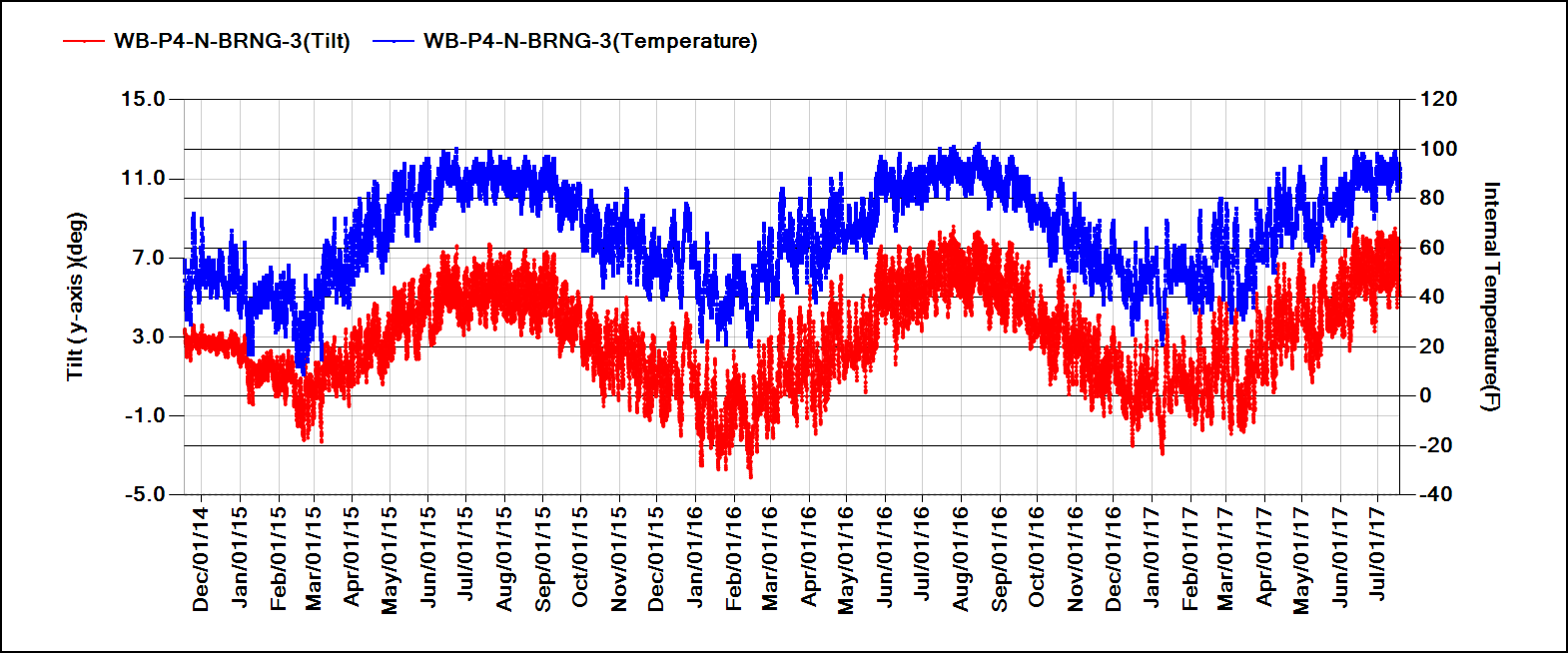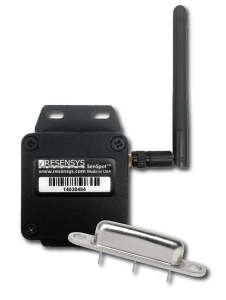Bereitstellung der weltweit energieeffizientesten drahtlosen Überwachungslösung mit Hilfe der elektrolytischen Neigungssensoren von Fredericks

Einführung
In den Vereinigten Staaten gibt es über 612.000 Brücken, und im Februar 2017 mussten nach Angaben der American Road and Transportation Builders Association fast 10 % von ihnen repariert oder ersetzt werden. Das bedeutet, dass derzeit über 55.000 Brücken in Echtzeit überwacht werden müssen, um eine Katastrophe wie den Brückeneinsturz 2007 in Minneapolis, Minnesota, zu verhindern.
Was ist Resensys?
Resensys bietet kosteneffiziente und skalierbare Lösungen, um die strukturelle Stabilität dieser und anderer Autobahnbrücken zu bewerten, so dass strukturelle Probleme erkannt und notwendige Instandhaltungen und Reparaturen geplant werden können, um die Sicherheit und Langlebigkeit der Brücken zu gewährleisten.
Die drahtlose Lösung SenSpot™ zur Überwachung des Bauwerkszustands ist für bestehende und im Bau befindliche Brücken gedacht und verfügt über kleine, kostengünstige und einfach zu installierende Funksensoren, die eine Vielzahl von Variablen messen, die die Leistungsfähigkeit einer Brücke beeinflussen.
Entstanden aus der Forschung von Präsident und CTO Dr. Mehdi Khandani an der University of Maryland, ist Resensys führend im Bereich der geostrukturellen Echtzeit-Überwachung und bietet das langlebigste drahtlose Brückenüberwachungssystem mit einer erwarteten Lebensdauer von mindestens 10 Jahren. Für weitere Informationen besuchen Sie http://www.resensys.com.
Die Herausforderung
Obwohl es auf dem Markt auch andere Sensoren zur Überwachung von Infrastrukturen gibt, unterscheidet sich ein Resensys-Gerät durch seinen extrem niedrigen Stromverbrauch: Es verbraucht nur etwa 4 Mikrowatt, also etwa 100 Millionen Mal weniger als eine typische Glühbirne. Das bedeutet, dass ein SenSpot-Sensor eine Mindestlebensdauer von 10 Jahren hat und nur eine kleine ½-AA-Batterie benötigt.
Um ein solch effizientes und genaues Überwachungssystem anbieten zu können, musste Resensys einen Neigungssensor mit einer Auflösung von bis zu einem Tausendstel Grad finden, der gleichzeitig einen geringen Stromverbrauch, eine lange Lebensdauer und eine Produktlebensdauer von mindestens 10 Jahren bietet.
Die Lösung
Dr. Khandani und sein Team bewerteten eine Reihe von MEMS- und anderen elektrolytischen Neigungssensoren und kamen zu dem Schluss, dass der einachsige elektrolytische Neigungssensor von Fredericks mit geringer Reichweite (PN 0703-0711-99) konkurrierende Produkte in Bezug auf langfristige Wiederholbarkeit und Auflösung deutlich übertrifft.
"Qualitativ waren die Geräte von Fredericks um eine Größenordnung besser als MEMS- und konkurrierende elektrolytische Sensoren", sagt Dr. Khandani. "In unserer Anwendung ist die Wiederholbarkeit sehr wichtig, und keines der konkurrierenden Produkte schnitt so gut ab wie die Produkte von Fredericks."
Die Ergebnisse
Mit Hilfe der elektrolytischen Neigungssensoren von Fredericks ist Resensys in der Lage, die weltweit energieeffizienteste kabellose Überwachungslösung anzubieten, die zur Sicherheit der Reisenden beiträgt. Rund 5.000 SenSpot™-Neigungssensoren sind in den USA und weltweit im Einsatz.
"Unsere Entscheidung für die Produkte von Fredericks fiel aufgrund der hervorragenden Genauigkeit und Langlebigkeit der Neigungssensoren", fügt Dr. Khandani hinzu. "Solche langfristigen und qualitativ hochwertigen Messungen helfen, kleinste Bewegungen und Instabilitäten an kritischen Brückenkomponenten zu erfassen."
SenSpot™ in Aktion: Brücke über den Patapsco River
Im Frühjahr 2014 wurden Risse in den Trägern und Pfeilern der I-70 Patapsco River Bridge bei Baltimore, Maryland, entdeckt. Ingenieure stellten fest, dass nicht reagierende Lager Schäden an den Pfeilern und Stahlträgern der Brücke verursacht hatten, die im Juni 2014 zur Sperrung der Brücke führten.
Es wurden Reparaturen durchgeführt, Nachrüstungen vorgenommen und im Juli 2014 wurde ein SenSpot™-Überwachungssystem installiert, um weitere Veränderungen zu erkennen. Mehr als 40 SenSpot™-Einheiten wurden an der Brücke montiert, darunter 12 Neigungssensoren an den Kipplagern der Brücke, um das Bewegungsmuster zu überwachen und Nichtreaktion oder Überreaktion zu erkennen. Zusätzlich wurden sechs hochauflösende Neigungssensoren an den Pfeilern der Brücke angebracht, um die durch kalte Temperaturen verursachte Durchbiegung und Drehung der Brückenschwingungslager zu überwachen.
Erste Ergebnisse von August bis November 2014 zeigten, dass die Lager an zwei Pfeilern nicht auf Temperaturänderungen reagierten und ein weiteres Lager nur 20 % der erwarteten Bewegung aufwies. Die bis zum Frühjahr 2015 gesammelten Daten zeigten jedoch, dass die Lager auf die robusten Nachrüstungen (in Kombination mit einem besonders kalten Winter) in noch nie dagewesenem Maße reagierten, und im März 2015 waren alle Pfeiler und die entsprechenden Lager voll ansprechbar.

Dr. Khandani merkt an: "Nach mehr als vier Jahren kontinuierlicher Überwachung freuen wir uns, dass die in den SenSpot™-Sensoren verwendeten Fredericks-Geräte sehr konsistente, wiederholbare und hochwertige Messungen von Neigung und Neigung mit einer Auflösung von weniger als einer Bogensekunde liefern."
Bevor die Maryland State Highway Administration alarmiert wurde, arbeitete das Resensys-Team mit den Ingenieuren von Fredericks zusammen, um die Daten zu bestätigen. Bei Fredericks pflegen wir partnerschaftliche Beziehungen zu unseren Kunden, und Kundenzufriedenheit hat für uns Priorität. Wir haben engagierte Vertreter und Ingenieure, die sich für einen reaktionsschnellen Service einsetzen, und unsere Kunden haben jederzeit Zugang zu unserem Führungsteam, was zum Teil durch unser "nicht zu groß, nicht zu klein"-Unternehmen ermöglicht wird.






